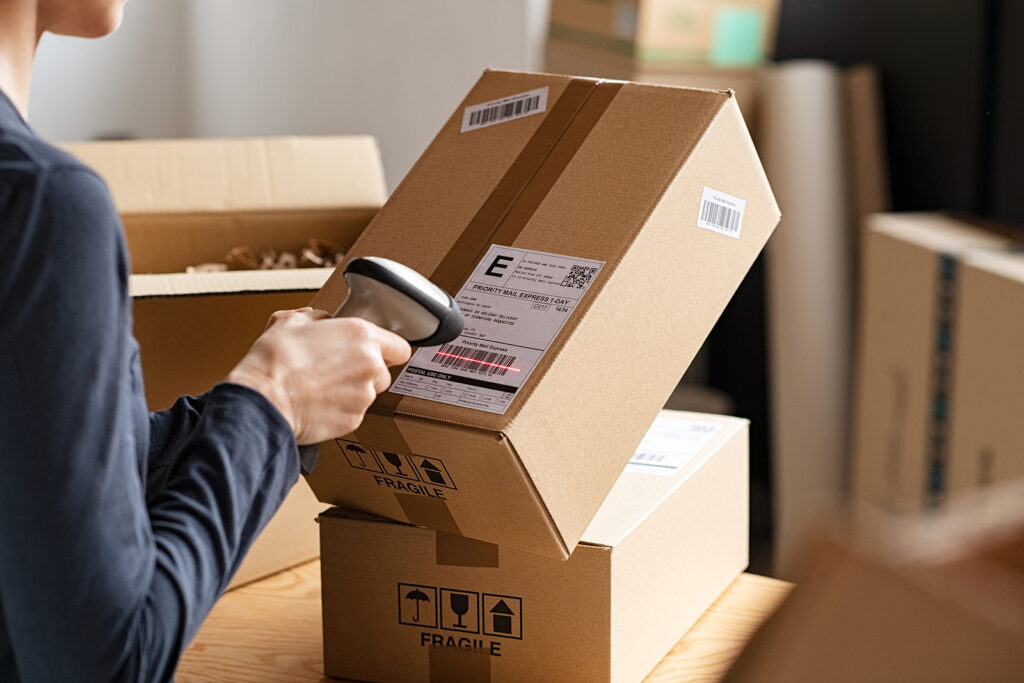The terms fulfilment warehouse and fulfilment centre are often used interchangeably when discussing logistics and supply chain management – they are also often referred to as a distribution centre, or a third party logistics provider. However, each term can mean something very different depending on the circumstances.
Put simply, both are large buildings that hold a business’s inventory, whilst having the capacity to sell physical products. Despite this, the services provided and the way they are put to use can be quite different from each other. Below, we’ll describe the purposes of each method in order to give you the understanding to make an informed decision into which option will suit your needs better.
The Main Differences Between Fulfilment Centres and Warehouses
Though these terms can often be used interchangeably, there are a few differences in their roles. These differences can significantly affect the part they play in getting products to your customers.
The main difference is that a warehouse is primarily to store inventory, while a fulfilment centre is designed around the customer experience – focussing on the process of ordering, having their products delivered on time, all in a cost-efficient way. This is only made possible because sellers store their inventory with a 3PL fulfilment centre located as close to the customer as possible – this assists in reducing shipping times and saving everyone money.
Long-Term vs Short-Term Storage
An eCommerce fulfilment warehouse is a part of a 3PL’s fulfilment centre as it is where they store your inventory. However, the main goal of the fulfilment centre is to simply manage the processes that happen in between a customer placing an order on the website, and the order arriving at their address.
A best-case scenario means that your inventory won’t hang around in the fulfilment centre for longer than 30 days. If it does need to be stored for longer, you may be incurred a higher fee for long term storage. Ideally, you and the 3PL will be frequently in contact regarding inventory levels – ensuring the third-party logistics provider and their fulfilment centre has enough stock to meet your customer demand.
Facility Operations
Compared to a fulfilment centre constantly bustling with activity, a warehouse tends to be inactive due to its sole purpose being to store inventory. A 3PL provides order fulfilment solutions at the fulfilment centre – these include:
- Receiving inventory
- Picking and packing packages and boxes
- Kitting items if necessary
- Printing and preparing shipping labels
- Shipping orders
- Managing returns and first steps of customer services
Activity only occurs in a warehouse when inventory is added or sent out – there aren’t usually any additional fulfilment services occurring.
Frequency of Pickups
Third-party logistics providers usually have well-established relationships with various shipping companies in order to bring consumers the best possible experience and to collect multiple shipments multiple times a day. This helps to make orders arrive in the timeframe guaranteed to the customer.
Depending on the shipping options you have available, shipping carriers may need to pick up same-day or next-day delivery items at specific times in order to ensure the delivery is on time. You may notice on websites, such as Asos, that you need to order by a specific time in order to guarantee next-day delivery.
In contrast to this, a warehouse will have far less frequent pickups scheduled due to it being more cost-efficient to send out all the requested items at one time – regardless of the shipping speed specified. This prevents flexibility in shipping times and costs for the seller and the buyer.
Contact us Today for Fulfilment Warehouse Services
Are you a small business with an expanding customer base and growing order volumes? Is your in-house fulfilment becoming too much to handle, and unviable? It may be time to enquire about fulfilment services offered by expert third party logistics services – like The Delivery Group. We can discuss your needs, and get everything up and running smoothly so that you can spend more time focussing on business strategy and marketing, whilst we do all the heavy lifting.
Benefits of a Third Party Logistics Fulfilment Warehouse
There is a wide range of benefits that sellers, and buyers alike, can benefit from when you start using a third party logistics fulfilment warehouse. These include but are not limited to:
Saving Your eCommerce Businesses Money
When a third party logistics fulfilment warehouse has acquired many clients and customers, their buying power increases with their vendors. This means that fulfilment companies can leverage discounts with their combined user volume which can be passed along to their customers. Also, by choosing a fulfilment centre to complete fulfilment, you won’t need to spend any money managing and staffing your own fulfilment warehouse.
Outsourcing Inventory Storage and Management
Unless your brand is a heavy-hitter selling thousands of items per day, managing a warehouse or centre by yourself will prove more expensive and time-consuming than it is worth. When you allow a fulfilment centre to handle these tasks for you, it can become a much more cost-effective method of providing efficient fulfilment.
If you can no longer keep up with the number of orders you’re receiving, or you’re running out of room in your in-house fulfilment operation, it may be time to consider outsourcing your fulfilment.
Focus on the Big Picture
Taking orders, picking products, packing boxes, and shipping orders are all critical duties of a company’s bottom line. However, rather than doing these tasks yourself, they can be easily outsourced to an experienced third-party logistics provider like The Delivery Group. If you’re a growing business, or your business has grown exponentially over the past year, passing these tasks to an expert 3PL means that you can spend more time on marketing, customer services, and business strategy.
eCommerce Fulfilment Services
With customer habits being forced to shift from brick and mortar stores to online stores in the past year, it is essential for sellers to work with a fulfilment company with plenty of experience, and has the necessary technology and operational expertise to manage the eCommerce fulfilment for potentially thousands of orders a day.
Scaling with the growing demands of a seller’s eCommerce business is essential for a good third party logistics company like The Delivery Group. Being able to scale with spikes in sales due to seasonal demand or promotions annually, all without sacrificing quality service is an essential part of daily fulfilment operations.
A Warehouse Isn’t Necessary
If you’ve ever been in the situation, whether currently or previously, where you’ve had a burst in order volumes and maintained that level – causing an overflow of inventory in your home, garage, office, or elsewhere; you should start considering outsourcing to a 3PL. Whilst it is an excellent problem to have, it can create an extreme workload when you’re a one-person band.
Outsourcing gives you the solution of selling all of your inventory, without the need to handle deliveries, organise, pick and pack, and ship everything yourself. Alleviating your workload
Distributed Inventory
A huge benefit to opting into a 3PL is where distribution centres are located, and how close they are to a majority of your customers. This means that the less distance your products have to travel from the distribution centre, the quicker they will be delivered to your customers – meaning you’ll pay less money for shipping and garner a higher level of customer satisfaction.
Fulfilment Automation
Utilising the latest technology allows every step of the fulfilment process to be documented in real-time. Each customer order can be sent automatically from eCommerce platforms directly to the fulfilment centre for staff to pick and pack stock for shipping. Once shipped, tracking information can be sent to the customer and the seller – ensuring the entire process goes smoothly.
Value-Added Services
Though the primary service of a fulfilment centre is to pick and pack, as well as shipping orders – sellers can leverage for other related fulfilment services, known as value-added services. These services include kitting, assembly, and returns management. Having these services creates an invaluable experience that means sellers can quickly adapt to their customers’ needs, as well as market trends.
Some services that fall under value-added services include:
- Custom packaging and labelling
- Assembling products for the creation of a new SKU
- Branded tape and marketing inserts
- Lite electric product testing
- Returns management and automation




